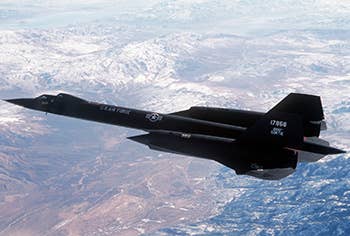Top 25 Coolest Aircraft
Check out the 25 coolest aircraft according to Flying magazine’s editors.

What makes an airplane "cool?" Suffice it to say, we know it when we see it. It just kind of hits you. Almost all of the airplanes here do something really differently (whether subtle or in-your-face). Most of them are the longstanding objects of fascination by us pilots. Will you agree with them all? No way! But we know that you'll think that most of them are as cool as we do. Enjoy checking out Flying Magazine's "25 Coolest Aircraft."
-Flying Photographs Evidence of Aurora?
-2012 Cirrus SR22
-The Awesome Airplanes of Burt Rutan
-What Rutan Did
-Useless Aviation Breakthroughs
-Eurocopter X3 Sets Helicopter Speed Record
-Video: Eurocopter X3 On U.S. Tour
-Helicopters of the Future
-The Awesome Airplanes of Burt Rutan
-What Rutan Did
-Jetman Flies with the DC-3
-The Adventures of Jetman Get exclusive online content like this delivered straight to your inbox by signing up for our free enewsletter. HANDOUT
-Gulfstream G650 Sets Round-the-World Speed Record
-Top 100 Warbirds
-Google Eyeing Spruce Goose Hangar for New Offices
-Rising Stars: Light Sport Universe
-Lockheed Martin F-22 Raptor Wallpaper
-Eclipse Delivers First 550
-Gear Up: The Big Iron
-Video: Wild Boeing 747-8 Takeoff
-Flying Vintage Article: Bede Turns it Loose
-What Burt Rutan Did Eric Farewell
-A Look Inside a Shuttle Cockpit
-Lockheed Skunk Works Reveals Mach 6 SR-72
Julie BoatmanContributor
Based in Maryland, Julie Boatman is an aviation educator and author. She holds an airline transport pilot certificate with Douglas DC-3 and CE510 (Citation Mustang) type ratings. She's a CFI/CFII since 1993, specializing in advanced aircraft and flight instructor development.
Related Stories

Sign-up for newsletters & special offers!
Get the latest FLYING stories & special offers delivered directly to your inbox






